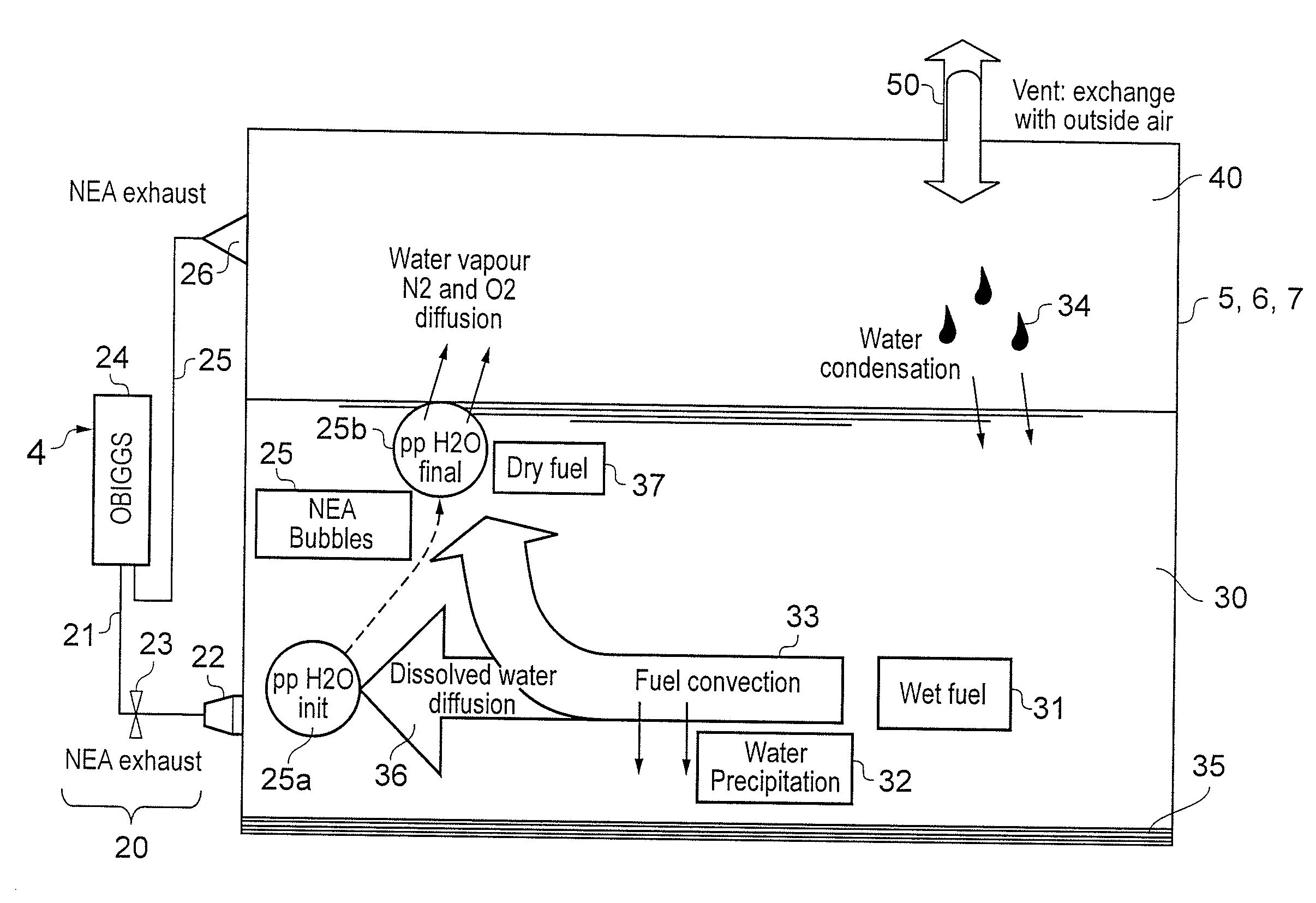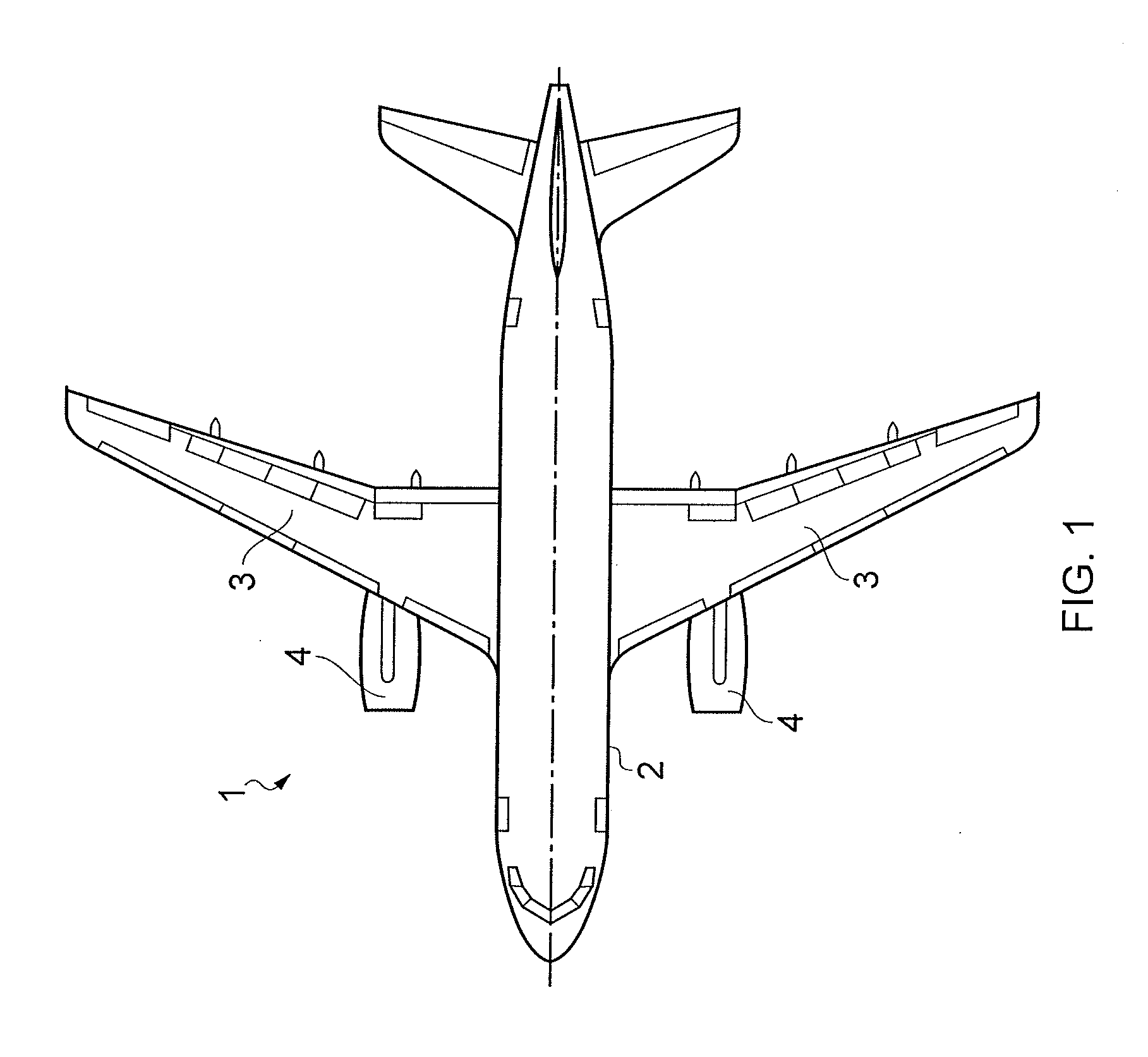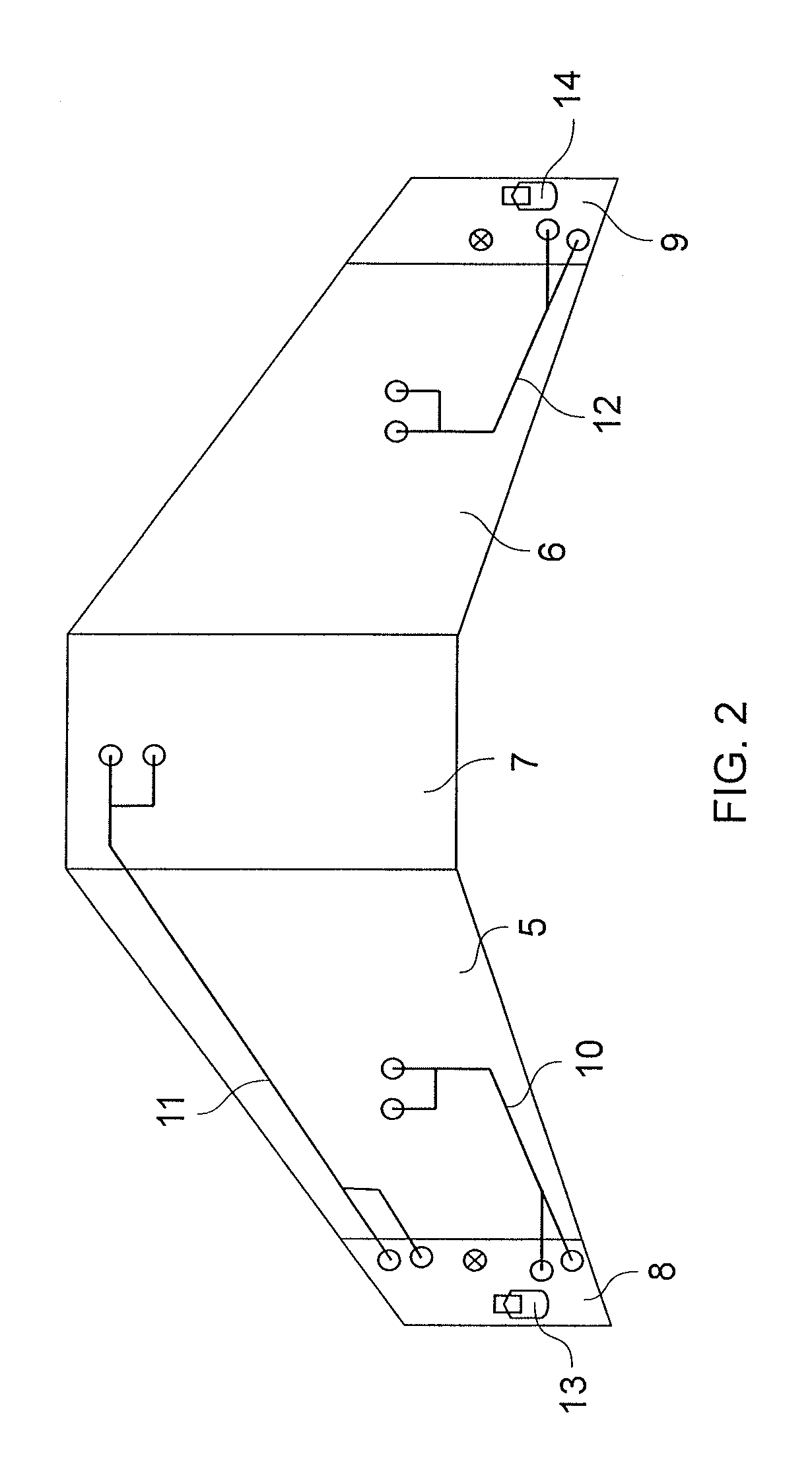Dehydration of liquid fuel
- Summary
- Abstract
- Description
- Claims
- Application Information
AI Technical Summary
Benefits of technology
Problems solved by technology
Method used
Image
Examples
Embodiment Construction
)
[0032]FIG. 1 illustrates a plan view of an aircraft 1, such as a commercial airliner, comprising a fuselage 2, a wing 3 and under wing mounted engines 4. The interior volume of the wing 3 is used as fuel tanks for storing liquid hydrocarbon aviation fuel, such as Jet A-1. The aircraft 1 has a three tank configuration, which forms part of an aircraft fuel system.
[0033]FIG. 2 illustrates schematically the three tank configuration which comprises a left wing tank 5, a right wing tank 6 and a centre tank 7. The aircraft fuel system further comprises a ventilation system for ventilating the ullage of each of the fuel tanks 5, 6, 7. The ventilation system includes a left vent tank 8 and a right vent tank 9 disposed at the tips of the wing 3. The vent tank 8 ventilates the left wing tank 5 by means of ventilation pipe 10, and also ventilates the centre tank 7 by means of ventilation pipe 11. The right vent tank 9 ventilates the right wing tank 6 by means of ventilation pipe 12. Each vent ...
PUM
| Property | Measurement | Unit |
|---|---|---|
| Temperature | aaaaa | aaaaa |
| Temperature | aaaaa | aaaaa |
| Temperature | aaaaa | aaaaa |
Abstract
Description
Claims
Application Information
 Login to View More
Login to View More - R&D
- Intellectual Property
- Life Sciences
- Materials
- Tech Scout
- Unparalleled Data Quality
- Higher Quality Content
- 60% Fewer Hallucinations
Browse by: Latest US Patents, China's latest patents, Technical Efficacy Thesaurus, Application Domain, Technology Topic, Popular Technical Reports.
© 2025 PatSnap. All rights reserved.Legal|Privacy policy|Modern Slavery Act Transparency Statement|Sitemap|About US| Contact US: help@patsnap.com



